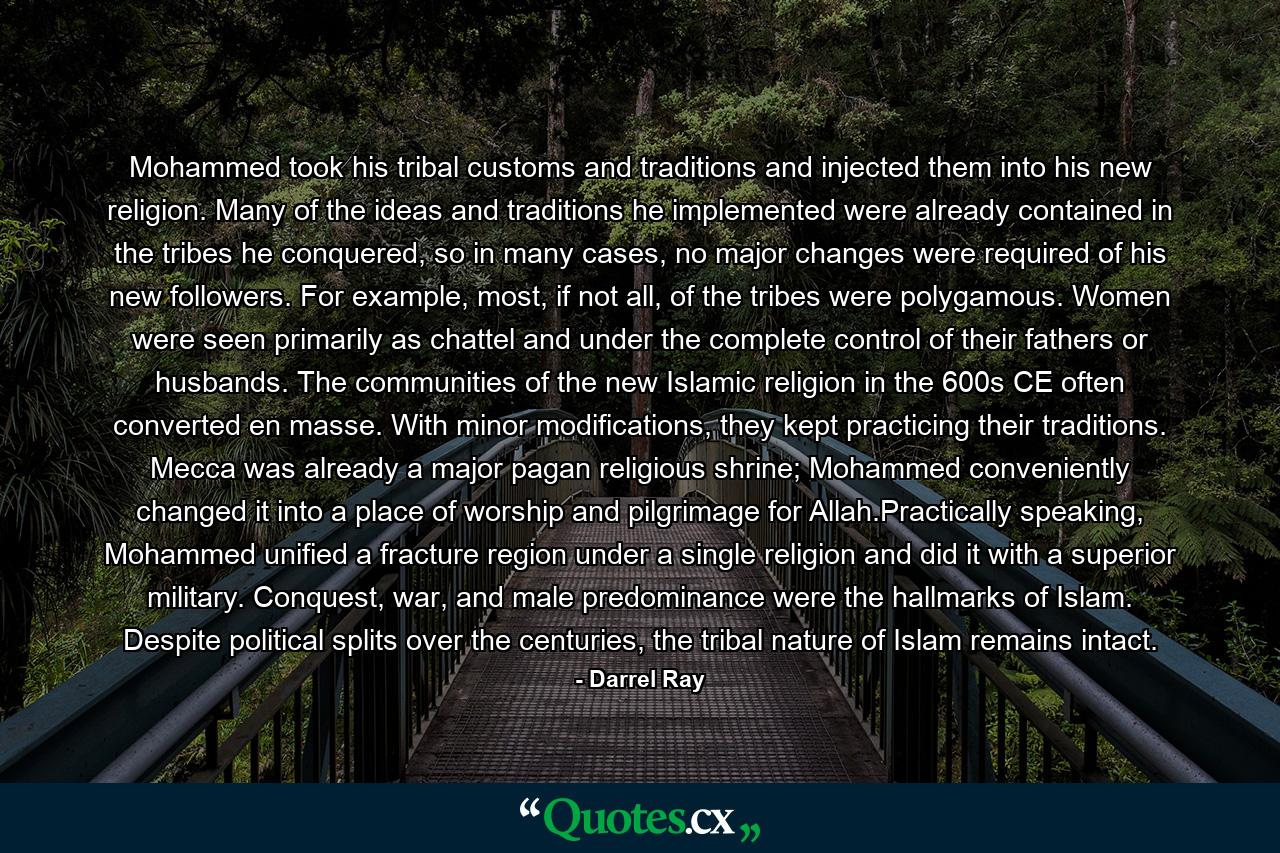Mohammed took his tribal customs and traditions and injected them into his new religion. Many of the ideas and traditions he implemented were already contained in the tribes he conquered, so in many cases, no major changes were required of his new followers. For example, most, if not all, of the tribes were polygamous. Women were seen primarily as chattel and under the complete control of their fathers or husbands. The communities of the new Islamic religion in the 600s CE often converted en masse. With minor modifications, they kept practicing their traditions. Mecca was already a major pagan religious shrine; Mohammed conveniently changed it into a place of worship and pilgrimage for Allah.Practically speaking, Mohammed unified a fracture region under a single religion and did it with a superior military. Conquest, war, and male predominance were the hallmarks of Islam. Despite political splits over the centuries, the tribal nature of Islam remains intact.
